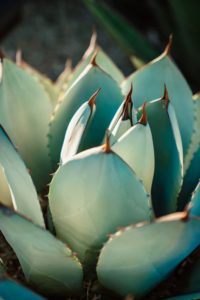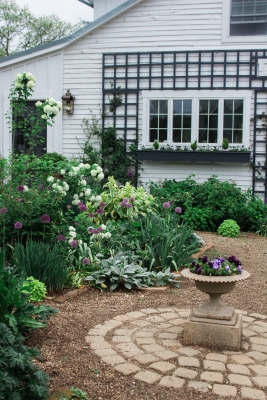As we approach the summer months, it becomes increasingly important to be mindful of our water usage, especially when it comes to landscaping. However, water conservation doesn’t have to mean sacrificing the beauty and health of your plants. In fact, there are plenty of ways to create a water-efficient landscape that saves both water and money. In this blog post, we will explain the importance of water conservation and how you can implement water-efficient landscaping without sacrificing the beauty of your outdoor space.

Why Water Conservation is Important, Even Without a Drought
Water saving has become a common practice among individuals and households living in regions prone to drought. However, water conservation is not just a necessity during dry seasons. It is a crucial step in preserving natural resources and reducing human impact on the environment. According to the Environmental Protection Agency, outdoor water use accounts for about 30% of total household water use, and up to 50% of that water is wasted due to inefficient irrigation methods or evaporation. By using water-efficient landscaping techniques, you can reduce your overall water usage and save money on your water bill.
Water Conservation is Good for the Planet and Your Wallet
The scarcity of water resources has become a global concern. In the US, approximately 40 out of the 50 states are currently experiencing drought conditions. Conserving water has numerous positive impacts on the planet. It helps to preserve natural resources, protect wildlife and aquatic ecosystems, and reduce energy consumption. Additionally, it can have a significant impact on greenhouse gas emissions. The EPA reports that almost 2% of the country’s electricity consumption goes towards pumping, treating, and transporting water. By reducing water consumption, we can reduce these greenhouse gas emissions, which contribute to climate change.
In addition to the environmental benefits, water conservation can also save you money on your water bills. According to the EPA, Americans spend roughly $500 billion on water and wastewater services annually. By adopting simple water-saving habits such as using low-flow fixtures, washing clothes in cold water, and repairing leaks promptly, you can significantly reduce your consumption and save hundreds of dollars in the long run.
Can you consume less water without sacrificing the look and health of your plants?
Yes! We know that often the thought of water restrictions might conjure images of brown, ugly lawns and struggling plants. However, efficient water use does not mean sacrificing the beauty and health of your outdoor space. It just means making informed decisions about your landscaping. In fact, swapping to a more drought-friend yard will give your property a unique curb appeal! One popular approach to this is xeriscaping.
What is xeriscaping?

According to the National Geographic Encyclopedia, xeriscaping is “the practice of designing landscapes to reduce or eliminate the need for irrigation.” The term “xeriscape” originated in Colorado, where water conservation is a top priority due to the state’s arid climate. Xeriscaping involves carefully designing your outdoor space to minimize water use while preserving aesthetic appeal.
Xeriscaping does not mean getting rid of all plants or installing artificial turf. Rather, it focuses on choosing plants that are native to the area, grouping plants with similar watering needs together, using efficient irrigation methods, and incorporating hardscaping features such as rocks and mulch to reduce water usage.
What Xeriscaping Principles We Can Adapt for the DC Area?
The DC Metropolitan Area faces a unique challenge due to the humid and variable climate. However, the basic principles of xeriscaping can be adapted to the area to improve water efficiency in landscapes.
The first principle is to select drought-resistant plants that are capable of surviving in the local climate. Native plants, such as asters, bee balms, and black-eyed Susans, are great options to consider as they provide habitat to pollinators and can thrive with minimal maintenance.
Secondly, reduce the amount of turf or grass on your lawn as it requires excessive water usage and maintenance. Instead, consider replacing it with groundcovers, low-growing shrubs, or ornamental grasses that require less water and can add variety to the landscape.
There are tons of simple measures you can take to make your yard more water-efficient.
Our top tips for building water-efficient landscaping
- Water Properly: It may seem obvious, but watering your trees and shrubs incorrectly costs you vital resources. Make sure to water early in the morning or in the evening for the best water retention. Avoid the middle of the day when it is the hottest out. Check out our watering tips and tricks here.
- Plan your landscape design: Proper planning is key to building a water-efficient landscape. Determine the areas of your yard that receive sunlight and shade, and group plants that require similar amounts of water together in that area.
- Use Drought-resistant Plants: Selecting the right plants is crucial in building a water-efficient landscape. Look for drought-resistant plants that require less watering or irrigation and can thrive in your local climate.
- Irrigation Systems: Drip irrigation systems are one of the best water-efficient irrigation methods for landscaping. This helps in minimizing the amount of water used while ensuring that your plants receive the required amount. Don’t forget to inspect your current system for leaks!
- Soil Quality: Ensure that your soil is of good quality. Adding organic matter or compost can make the soil more absorbent and less prone to water runoff.
- Use Mulch: Mulch is a cost-effective and efficient way to minimize the amount of water used, reduce soil erosion, and control weed growth.

Water conservation is crucial in preserving natural resources and ensuring a sustainable future. Xeriscaping is an excellent landscaping method that balances efficient water use with aesthetic appeal. By adopting xeriscaping principles and implementing water-efficient landscaping techniques, you can create a beautiful outdoor space while reducing your impact on the environment and saving money. So, let’s all step towards responsible water use and start conserving water today!


